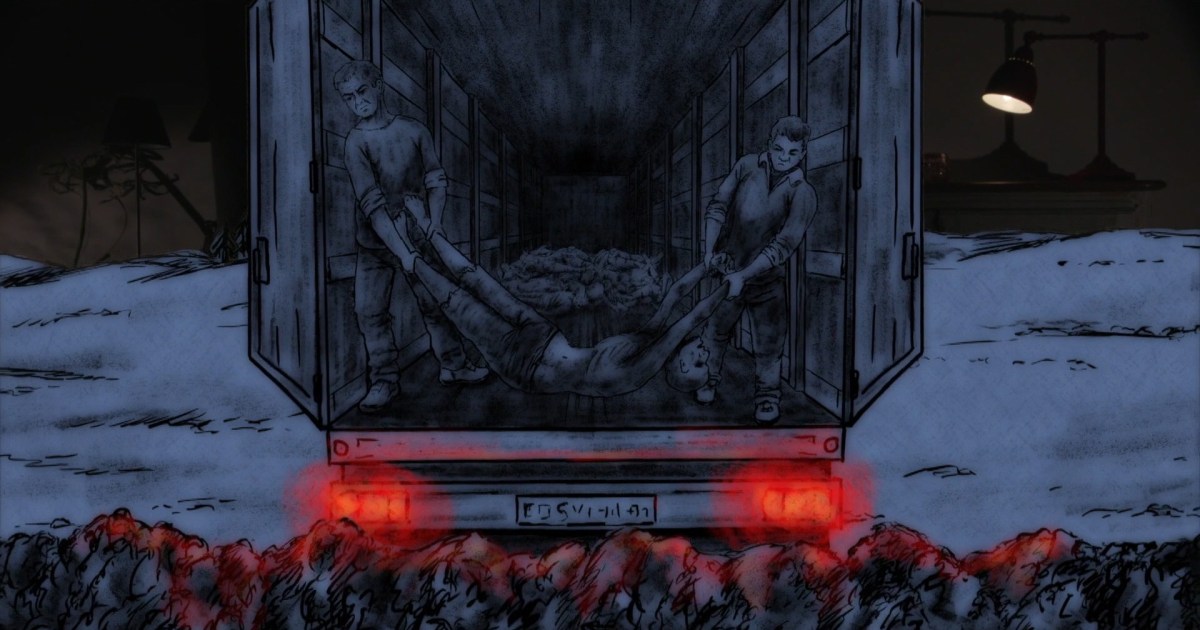In the testimony, the "grave digger" - who refused to reveal his identity - revealed that he had buried bodies that were coming to him from the security branches of the Syrian regime, and he started his work from March 2011 and continued until October 2018, and confirmed that the bodies that were arriving to him At first, he did not know that they were people who died during torture, but rather he believed that they were unknown people who died in the streets.
He pointed out that the corpses were reaching him in a rotting and disfigured condition, which was causing him to stop eating for up to 3 days due to the horrificness of what he sees.
After a while, papers attached to the bodies began to come from the security branches of the regime, confirming that he had buried 8 of his childhood friends after they had died in the security branches.
He said that numbers or letters were put on the bodies without putting their full names, revealing that about 300 bodies were transferred from the backyard of Harasta Hospital through the mortuaries in each transfer.
He also talked about the smells that came out from the refrigerators to the street and the passers-by could distinguish what was in them, and a medium-sized refrigerated truck came at least once a week from Sednaya prison, carrying an average of 50 bodies, indicating that the number of bodies that were arriving in the trucks Completely different from the number in the attached statements, where the number on the papers was 50 bodies, when in fact it is up to 70 bodies.
cemetery sites
The grave digger revealed the cemetery in which he was working, and its name is the "Naja" cemetery, which is 44 kilometers from Damascus, and it was surrounded by a wall about 4 meters high. The cemetery was completely filled.
The investigative investigation was able to reach some other secret cemeteries located at the headquarters of the Fourth Division, 22 kilometers from the capital, while the second cemetery is located at the Marj Al-Sultan Military Airport and is about 30 kilometers from Damascus, which was confirmed by the "Syrians for Truth and Justice" organization.
The grave digger confirmed the existence of a cemetery called Al-Qutayfa, 50 kilometers from Damascus, in which lines were dug, ranging in length between 50 and 100 meters, and some of them reach more than this, at a depth of 6 meters, in which the bodies are thrown.
The former head of forensic medicine in Aleppo, Abdel-Tawab Shahrour, spoke about placing the bodies after the forensic medicine completed the death procedures in large trucks, after placing them in black nylon bags and transporting them to an unknown location, stressing that the procedures for revealing the bodies differed after the revolution, and the judicial authorities were not You attend the examination of the corpse, and the papers related to that are not completed.
The investigation reached the names of many of the officers supervising the killing, according to the sequence mentioned by the grave digger in his testimony, as the bodies were received by Colonel Mazen Samandar and Colonel Ayman al-Hassan, and were supervised by Brigadier General Doctor Ammar Suleiman, before he was promoted to the rank of major general and appointed as a supervisor of medical services. It follows Maher al-Assad and Ali Mamlouk.
The grave digger also confirmed that he listened to Brigadier General Ammar Suleiman speaking directly to President al-Assad to take orders from him and convey the news to him, as Bashar described him as an uncle because he was one of the old assistants of the Syrian President.
In turn, lawyer and human rights activist Anwar al-Bunni confirmed that the testimony given by the grave digger is important in answering many puzzles, including the Caesar photos, because the open question about the number of bodies that were dying in the security branches and the published photos is: Where do the bodies go and how are they disposed of ?
He added that he also answered about the method of transporting the bodies and the periods of transferring them from places of detention and killing to their mass burial graves, but there are many missing bodies that have not been contacted so far, noting that the regime deliberately established graves 6 meters deep, in which the unknown bodies are thrown on the Specific distances, and backfilling is done to remain graves for civilians.
Victims' families
Fadwa Muhammad, the wife of the detainee Abdul Aziz al-Khair and the mother of the detainee Maher Tahan, speaks bitterly about the harsh details of her life after the news of her husband and son was interrupted since their arrest in 2012.
In turn, the activist in the field of victim researcher, Maryam Al-Hallaq, mother of Ayham Ghazoul, who was kidnapped in 2012, said that her son's return to her is like a dream that is difficult to achieve.
The former detainee confirms seeing from the prison window that white cars are being loaded with the bodies of detainees on a daily basis, leaving the prison.
She added that she was summoned by the regime and handed over her son's death certificate. When asked about his burial place, the responsible Syrian officer refused to answer, and shouted at her loudly.
Regarding the testimony of the grave digger, the public prosecutor in the trial of the Syrian officers, Sebastian Shermer, said that it is difficult to verify individual testimonies, and the Public Prosecution is still looking for other witnesses who participated in the grave digger in his work.
In turn, the International Committee for Missing Persons called on the families of the disappeared to come to it in order to take DNA samples, which may contribute to identifying them in the future.

